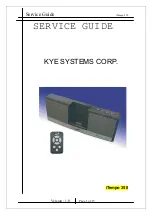
You can also power the speaker by connecting any standard
micro USB cable (not included) to the back DC 5V IN port.
IMPORTANT: The DC 5V IN port does not charge the
batteries, but it can be used to power the device with or
without batteries.
DC 5V
IN Port
3
If the sound isn’t amplified, it’s possible that the speaker
location on your phone doesn’t align with the back of the
BoomTouch™ Speaker. Try different positions shown above. If
it still doesn’t work, try removing your phone case. It may be
covering the speaker.
Adjust Phone Alignment
Plug a standard mini-jack audio cable (not included) into the
Audio IN jack on back and then into the headphone jack on
your smartphone or audio device.
Audio IN
Auxiliary Input Use
Right Side Up Upside Down
Angle
Pushed Up
2
1
Before using the BoomTouch™ Speaker for the first time,
make sure that the volume of your phone is around 50%.
After, you can experiment with the sound levels to get the
perfect volume.
Play a song that has a consistent volume level throughout.
This will help you place the phone in the best spot on
the speaker.
Set The Device Volume
Play Your Music
50%
©2016 APG All Rights Reserved.
BoomTouch is a Trademark of APG.
Distributed by Allstar Products Group
Hawthorne, NY 10532
Product Color and Appearance may vary
Made in China
Back of the BoomTouch™ Speaker
- Your phone’s speaker location
Using Your BoomTouch™
Speaker Without Batteries
Sound Quality Tips
Warning: Changes or modifications to this unit not expressly
approved by the party responsible for compliance could void the
user’s authority to operate the equipment.
NOTE: This equipment has been tested and found to comply with
the limits for a Class B digital device, pursuant to Part 15 of the FCC
Rules. These limits are designed to provide reasonable protection
against harmful interference in a residential installation. This
equipment generates, uses and can radiate radio frequency energy
and, if not installed and used in accordance with the instructions,
may cause harmful interference to radio communications.
However, there is no guarantee that interference will not occur in a
particular installation. If this equipment does cause harmful
interference to radio or television reception, which can be
determined by turning the equipment off and on, the user is
encouraged to try to correct the interference by one or more of the
following measures:
o Reorient or relocate the receiving antenna.
o Increase the separation between the equipment and receiver.
o Connect the equipment into an outlet on a circuit different from
that to which the receiver is connected.
o Consult the dealer or an experienced radio/TV technician for help.
For helpful hints and useful tips,
please visit:
www.BoomTouchTips.com
IM2




















